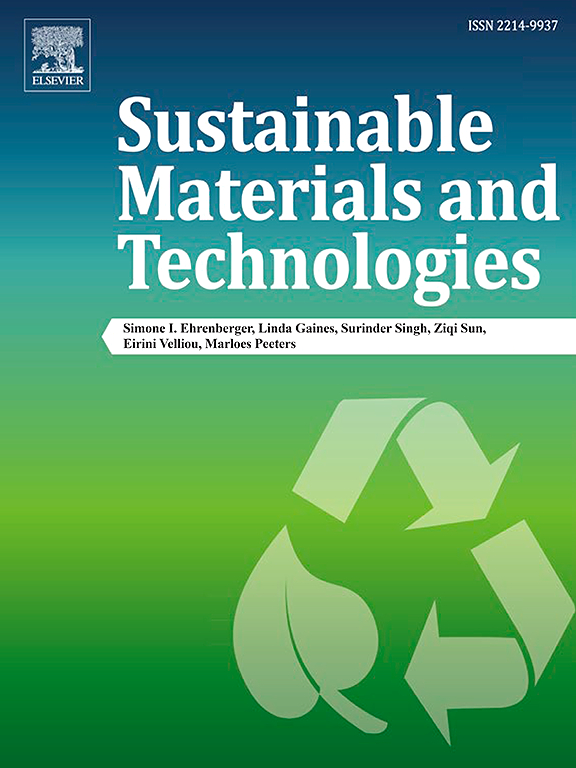彩色棉纺织废料的闭环回收
IF 9.2
2区 工程技术
Q1 ENERGY & FUELS
引用次数: 0
摘要
长期以来,纺织服装业的班轮经济一直受到资源消耗和环境污染的批评。利用废棉纺织进行再生纤维素生产已被认为是在纺织工业中建立循环经济的一个有前途的战略。研究了染料种类对棉纺织废液脱色率的影响。用碱性水解和还原剂分别或联合对三种常见活性染料进行脱色,得到了白度指数超过80的再生棉浆料。我们进一步评价了脱色后再生棉浆的分子特性,讨论了纤维素溶液的流变性能,并探讨了再生纤维素纤维的力学性能及其可染性。这项工作为建立纤维素纤维在时尚行业的循环循环材料流提供了全面的意义。本文章由计算机程序翻译,如有差异,请以英文原文为准。

Closed-loop recycling for colored cotton textile waste
The liner economy of textile/fashion industries have long been criticized for resource depletion and environmental pollution. The use of waste cotton textile for regenerated cellulose production has been considered a promising strategy for establishing circular economy within the textile industry. This work investigated the impact of dye types on the decoloration rate of cotton textile waste. Effective decoloration was achieved for all three common reactive dyes by using alkaline hydrolysis and a reducing agent either individually or in combination, resulting in recycled cotton pulp with whiteness index exceeding 80. We further assess the molecular properties of recycled cotton pulp after decoloration, discussed the rheological properties of cellulose solutions, and explored the mechanical properties of regenerated cellulose fiber and its dyeability. This work provides comprehensive implications for establishing a circular material flow for cellulose fiber to be recycled and reused in fashion industry.
求助全文
通过发布文献求助,成功后即可免费获取论文全文。
去求助
来源期刊

Sustainable Materials and Technologies
Energy-Renewable Energy, Sustainability and the Environment
CiteScore
13.40
自引率
4.20%
发文量
158
审稿时长
45 days
期刊介绍:
Sustainable Materials and Technologies (SM&T), an international, cross-disciplinary, fully open access journal published by Elsevier, focuses on original full-length research articles and reviews. It covers applied or fundamental science of nano-, micro-, meso-, and macro-scale aspects of materials and technologies for sustainable development. SM&T gives special attention to contributions that bridge the knowledge gap between materials and system designs.
 求助内容:
求助内容: 应助结果提醒方式:
应助结果提醒方式:


